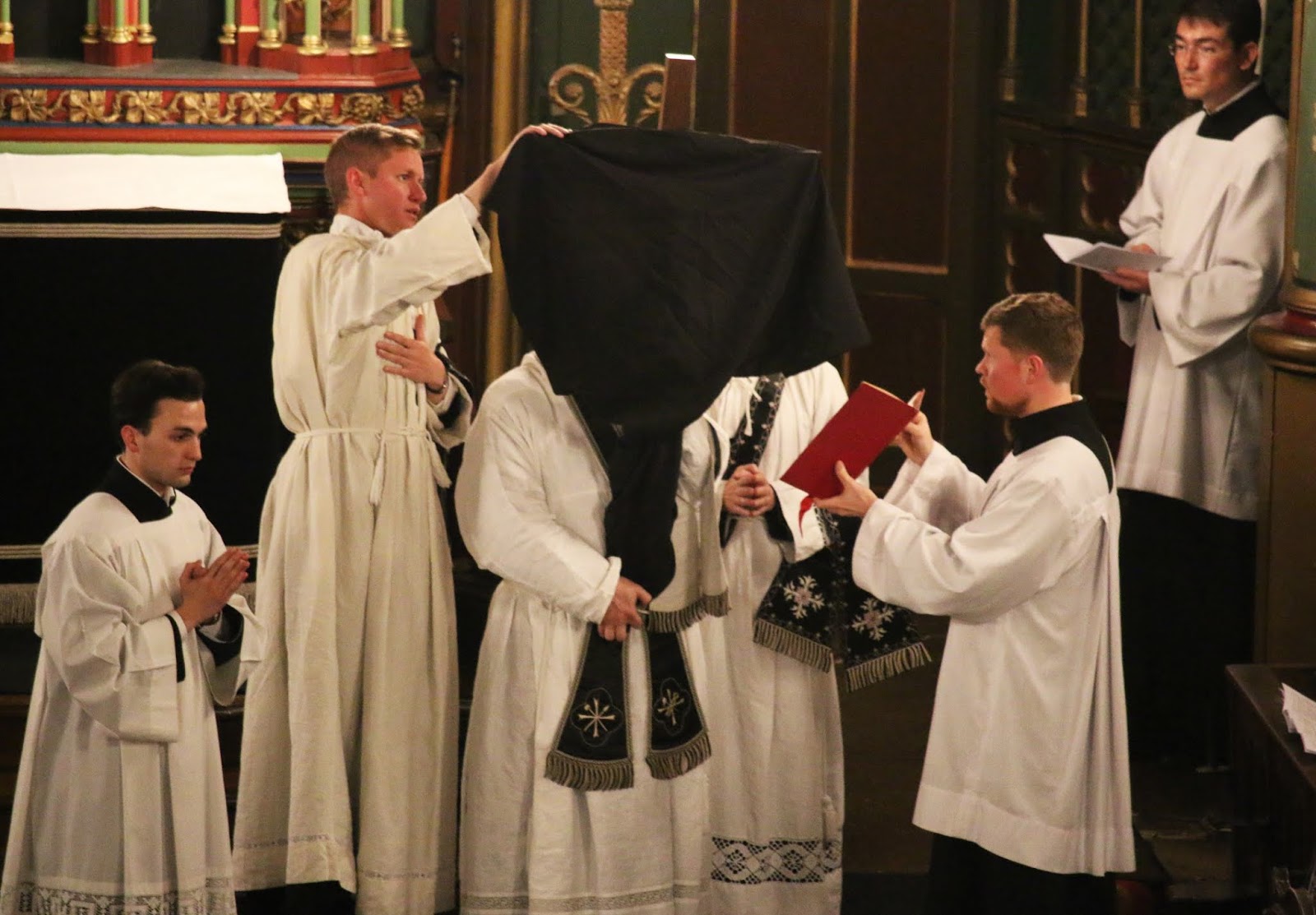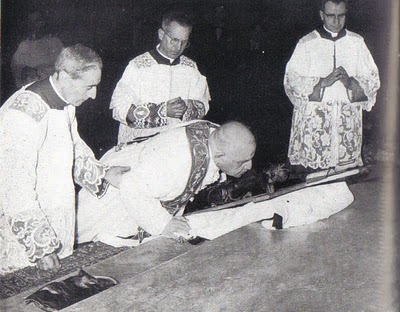The next in my series on how to observe the pre-1955 Holy Week liturgies at home is the Good Friday ceremonies.
Resources
- A booklet can be downloaded here
- I have put together another playlist of the sacred music that can be found here (after the liturgical music of the day, I have included some other pieces that might be used for the stations of the cross or just in the home to aid recollection throughout the day.)
Ideas for celebrating the liturgy at home
The traditional Good Friday Liturgy is celebrated in the morning.
- If you followed the instructions in my Maundy Thursday post, you will have stripped your prayer space of any altar frontals/linens/cloths. The candles are not lit. No incense is used. A single crucifix (used for veneration later) is placed standing upright on the altar or table and is covered with a purple or black veil.
- The father of the house leads the family in the opening reading, in English or Latin and the accompanying tract can be listened to using the playlist. Then the prayer is said.
- The mother of the family could then read the next reading and the accompanying tract can be listened to and followed in the booklet.
- The Passion is then read. C- Mother, S- All, + – Father
- The Great intercessions are prayed by the father. The mother may wish to say the “Flectamus genua, Levate”as these instructions are usually said by the deacon and subdeacon.
The Adoration of the Cross
- The father takes the veiled crucifix and holds it facing the family. He removes the top of the veil to reveal the top of the crucifix. He says or sings the Ecce lignum Crucis and the family respond with the Venite Adoremus. This could be done in English. All kneel.
- He then reveals the right arm and repeats the chant, beginning on a higher note.
- The process is repeated a third time, now revealing the whole crucifix.
- The crucifix is placed on a cushion covered with a purple or other dark cloth, on the ground in front of the altar/table
- The father imitates what the priest would do at this time by removing his shoes, kneeling several times in approaching the cross before venerating it with a kiss. The family follow as the playlist resumes at the Reproaches- Popule Meus. When not venerating the cross, the family meditate on the translation of the chants being sung. These are some of the most moving in the whole liturgical year.
- The candles are lit towards the end of the Crux Fidelis
The Mass of the Presanctified
- The Vexilla Regis is listened to or sung. The priest would usually be retrieving the Blessed Sacrament from the altar of repose in procession at this time and so the family at home begin to prepare to make a fervent spiritual communion.
- In the absence of the Blessed Sacrament and given the liturgical character of the day, it might be best not to use incense at home at this point, although the Blessed Sacrament would usually be reverenced thus in the church.
- The Pater Noster is said with the other prayer in the booklet and the family make an act of spiritual communion.
The liturgy ends abruptly after the prayer “Quod ore sumpsimus”
It would be good if the house could remain in silence (or close to it depending on the age of the children) until Stations of the Cross are prayed at 3pm.
Remember my perpetual disclaimer, it is better to do less and do it well than to push small children beyond what they can handle. All or part of this can be used to enable the family to worthily observe the Passion of the Lord while we are not able to attend church.
Tenebrae
Once the children are in bed, the adults could pray the office of Tenebrae (Matins and Lauds of Holy Saturday anticipated).
Live-streamed from the Birmingham Oratory at 7.30pm here

